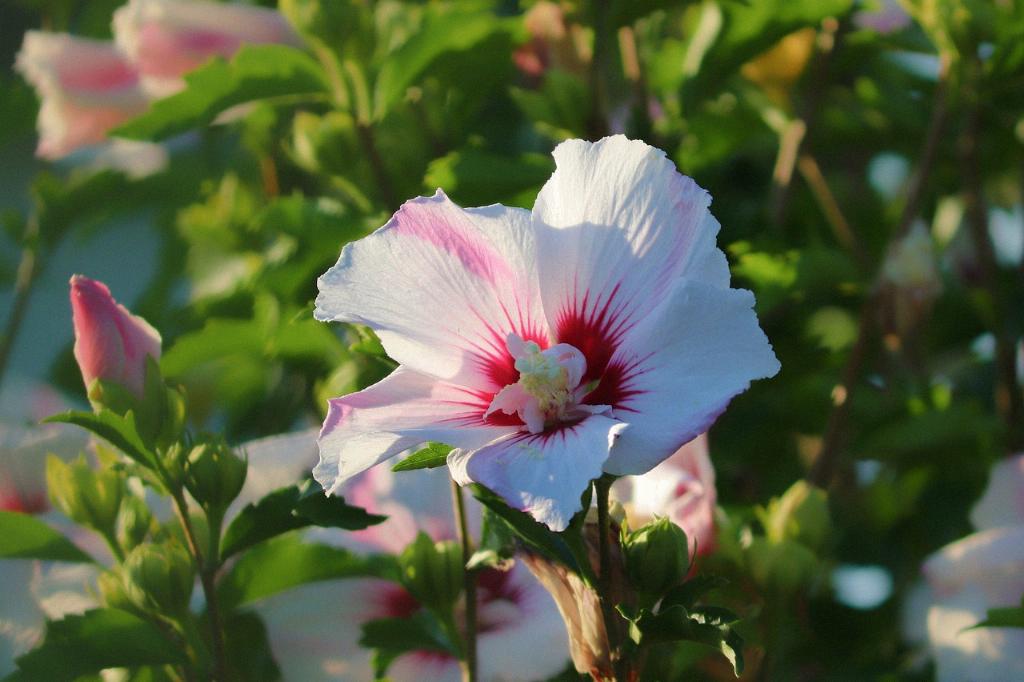When it comes to the question of whether Rose of Sharon and Hibiscus are the same, the answer is both simple and complex. Let’s delve into the intricate world of botanical classifications and distinctions to understand the nuances between these two seemingly similar plants.
The Genus Connection: Hibiscus and Rose of Sharon
One of the key points to consider is that Hibiscus is not the name of a specific plant but rather the genus to which Rose of Sharon belongs. This genus encompasses a wide range of flowering plants, each with its own unique characteristics and traits.
Physical Characteristics: Flowers and Growth Patterns
While both Rose of Sharon and certain varieties of Hibiscus boast stunning tropical flowers that share a resemblance, there are notable differences in their growth patterns. Rose of Sharon, also known as althea, is characterized by its woody shrub-like structure, making it a hardy choice for colder climates.
Climate Preferences: Adaptability and Hardiness
Another aspect to consider is the climate preferences of these plants. Rose of Sharon tends to be more resilient to colder temperatures, thriving in a variety of climates. On the other hand, certain Hibiscus varieties may require a warmer environment to flourish.
Leaves and Foliage: Texture and Appearance
Examining the leaves and foliage of Rose of Sharon and Hibiscus plants reveals further distinctions. While both plants may exhibit lush greenery, the texture and appearance of their leaves can vary, providing visual cues to differentiate between the two.
Blooming Seasons: Timing and Duration
One striking difference between Rose of Sharon and Hibiscus lies in their blooming seasons. While Rose of Sharon typically blooms in late summer to early fall, certain Hibiscus varieties may showcase their flowers at different times of the year, adding to the diversity of these plants.
Cultural Significance: Symbolism and Traditions
Beyond their botanical distinctions, both Rose of Sharon and Hibiscus hold cultural significance in various traditions and societies. From symbolic meanings to practical uses, these plants have captured the imagination of people around the world.
Gardening Tips: Care and Maintenance
For those looking to cultivate Rose of Sharon or Hibiscus in their gardens, understanding the specific care requirements of each plant is essential. From soil preferences to watering routines, tailoring your gardening practices to suit these plants can enhance their growth and vitality.
Landscape Design: Aesthetic Appeal and Integration
Integrating Rose of Sharon or Hibiscus into your landscape design can yield stunning results, adding vibrant colors and textures to your outdoor space. Whether used as focal points or as part of a larger garden scheme, these plants offer endless possibilities for creative expression.
Ecosystem Benefits: Wildlife Attraction and Environmental Impact
Both Rose of Sharon and Hibiscus play a role in supporting local ecosystems by attracting pollinators and wildlife. Bees, butterflies, and other beneficial insects are drawn to the nectar-rich flowers of these plants, contributing to biodiversity and environmental health.
Medicinal and Culinary Uses: Healing Properties and Gourmet Delights
Exploring the potential medicinal and culinary uses of Rose of Sharon and Hibiscus reveals a treasure trove of benefits. From herbal teas to herbal remedies, these plants have been valued for their healing properties and gourmet delights throughout history.
Conclusion: Embracing the Diversity of Nature
In conclusion, while Rose of Sharon and Hibiscus may share certain similarities, they are distinct plants with unique characteristics and attributes. By appreciating the beauty and diversity of nature’s creations, we can cultivate a deeper understanding and respect for the botanical world that surrounds us.

